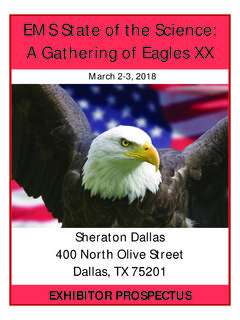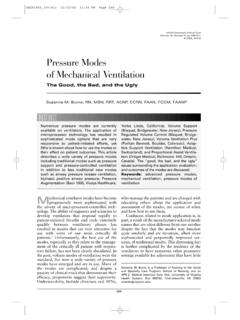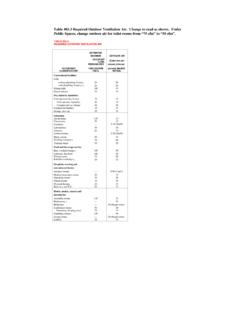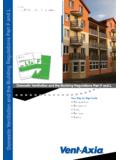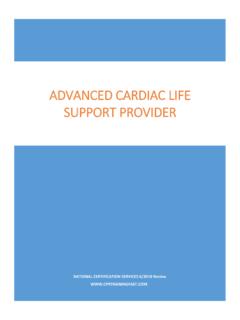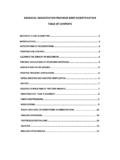Transcription of Prehospital Noninvasive Ventilation - Gathering of …
1 Prehospital Noninvasive Prehospital Noninvasive VentilationVentilationKathleen Schrank, MDKathleen Schrank, MDCity of Miami Fire RescueCity of Miami Fire RescueNonNon--Invasive Positive Pressure Invasive Positive Pressure Ventilation (NPPV): Ventilation (NPPV): Mask onlyMask only no ETT no ETT CContinuous ontinuous PPositive ositive AAirway irway PPressure: ressure: constant level throughout respiratory cycleconstant level throughout respiratory cycle BiBilevellevelPAPPAP: : separate settings for separate settings for inspiration and expirationinspiration and expirationOther forms:Other forms: + pressure Ventilation via B+ pressure Ventilation via B--VV--M: inspiration M: inspiration only; highly variable pressuresonly; highly variable pressures PEEP: Positive endPEEP: Positive end--expiratory pressure onlyexpiratory pressure only PSV: Pressure support Ventilation (insp.)
2 Only)PSV: Pressure support Ventilation (insp. only) PAV: Proportional assist vent. (effortPAV: Proportional assist vent. (effort--related)related)Normal vs. Supported VentilationNormal vs. Supported Ventilation Our usual breathing is NEGATIVE Our usual breathing is NEGATIVE inspiratory pressure, pulling air and inspiratory pressure, pulling air and blood flow into flow into chest. POSITIVE pressure ventilationPOSITIVE pressure Ventilation :: pushes air into chestpushes air into chest overcomes airway resistanceovercomes airway resistance pulmonary gas exchangepulmonary gas exchange keeps alveoli openkeeps alveoli open decreases blood return to heartdecreases blood return to heart lowers BPlowers BPCPAP/CPAP/BiPAPBiPAPB enefitsBenefitsMostly hospital studiesMostly hospital studies CHF and COPDCHF and COPD.
3 AAlveolar Ventilation / oxygenationlveolar Ventilation / oxygenation Work of breathingWork of breathing MortalityMortality MorbidityMorbidity Length of hospital stayLength of hospital stay Need for ETTNeed for ETT/ mechanical Ventilation / mechanical Ventilation RR, RR, TV, TV, VVEE, , V/Q match, V/Q match, FRCFRCP rehospital CPAPP rehospital CPAPH ubble, et al (PEC, 2006):Hubble, et al (PEC, 2006): 2 similar EMS systems/protocols2 similar EMS systems/protocols Pulmonary edemaPulmonary edema patients (24% missed patients (24% missed DxDx))CPAPCPAPNo CPAPNo CPAPETT: and P:RR and P:betterbetterDyspnea:Dyspnea:betterbett erUse in Respiratory FailureUse in Respiratory Failure((hypercarbichypercarbic*, hypoxic)*, hypoxic) Acute cardiac pulmonary edema*Acute cardiac pulmonary edema* COPD exacerbation*COPD exacerbation* AsthmaAsthma Do Not IntubateDo Not Intubate patients in patients in resprespdistressdistress NoncardiacNoncardiacPE/ARDS/drowning/smo kePE/ARDS/drowning/smoke PneumoniaPneumonia Obstructive sleep apneaObstructive sleep apnea Hypoventilation with morbid obesityHypoventilation with morbid obesity ImmunocompromisedImmunocompromisedpatien tpatient Trauma (no PTX)Trauma (no PTX) Cystic fibrosisCystic fibrosis*best evidence*best evidenceUse in Respiratory Failure +Use in Respiratory Failure + Subjective:Subjective.
4 Clinical judgmentClinical judgment Looks badLooks bad // heading for a tubeheading for a tube Objective:Objective: Accessory muscle useAccessory muscle use O2 sat <90% (or < 92%)O2 sat <90% (or < 92%) RR > 24RR > 24 Unable to speak full sentencesUnable to speak full sentences Abdominal/Abdominal/paradoxicparadoxicbr eathingbreathing Altered Altered mentationmentationContraindicationsContr aindications Obvious need for ETTO bvious need for ETT: apnea, arrest: apnea, arrest HypotensionHypotension(< 90 systolic)(< 90 systolic) Severe AMS (GCS < 11)Severe AMS (GCS < 11) judgment call with judgment call with hypercarbichypercarbicAMSAMS Inability to cooperateInability to cooperate PneumothoraxPneumothorax Facial deformity / trauma / unable to sealFacial deformity / trauma / unable to seal Recent (<1 wk) facial, Recent (<1 wk) facial, neurologicneurologic, gastric , gastric surgerysurgery High risk of aspirationHigh risk of aspiration Unstable cardiac arrhythmiaUnstable cardiac arrhythmia Caution: Caution: Upper airway obstruction / FBUpper airway obstruction / FBCPAP devicesCPAP devices CPAP generatorCPAP generator Circuit (tubing)Circuit (tubing) Interface: Interface.
5 Face maskFace mask acute acute SxSx ss, mouth breathing, mouth breathing Nasal maskNasal mask better tolerated, can talk, better tolerated, can talk, low risk of aspirationlow risk of aspiration not for EMSnot for EMS HelmetHelmet better tolerated, can talk, read, better tolerated, can talk, read, drink thru straw, less complications with drink thru straw, less complications with long use, but can accumulate CO2, noisylong use, but can accumulate CO2, noisy Oxygen sourceOxygen source Bells and whistles (hospital devices)Bells and whistles (hospital devices)UseUse Prep the patient while setting up CPAPPrep the patient while setting up CPAP Give necessary medsGive necessary meds Asthma, COPDA sthma, COPD nebulizersnebulizers, etc., etc. Cardiac PECardiac PE NTG, NTG, furosemidefurosemide, etc., etc. Apply maskApply mask may have pt hold it at firstmay have pt hold it at first Adjust straps for good sealAdjust straps for good seal Reassure patient Reassure patient Monitor patient statusMonitor patient status Alert the receiving hospitalAlert the receiving hospital Continue CPAP during transfer of careContinue CPAP during transfer of carePotential ComplicationsPotential ComplicationsEMS ConcernsEMS Concerns:: Air leakAir leak Inability to tolerate maskInability to tolerate mask HypotensionHypotension rare rare Aspiration if vomitingAspiration if vomitingLonger use:Longer use.
6 Local skin damage, eye irritation, sinus painLocal skin damage, eye irritation, sinus pain Gastric distensionGastric distension mild, uncommonmild, uncommon BarotraumaBarotrauma/ / pneumothoraxpneumothorax rarerareCPAP Devices for EMSCPAP Devices for EMS Small, portable, air/O2 drivenSmall, portable, air/O2 driven Fixed or variable pressure, FiOFixed or variable pressure, FiO22 May drain OMay drain O22tanks fasttanks fast Available for EMS use:Available for EMS use: BoussignacBoussignacCPAP CPAP PORTOPORTO22 VENT VENT CPAPCPAP osos WhisperflowWhisperflowFixed, Variable, Low FlowFixed, Variable, Low Flow EzPAPEzPAP + more+ moreImplementationImplementation ProtocolsProtocols TrainingTraining Encouragement of first use on Encouragement of first use on patientpatient Prep the hospitalsPrep the hospitals ED needs to ED needs to have CPAP or have CPAP or BiPAPBiPAPdevicedevice QMQMR eferencesReferences Collins, et al: The use of NPPV in ED patients with acute Collins, et al: The use of NPPV in ED patients with acute cardiogeniccardiogenicpulmonary edema: a systematic review.
7 AEM pulmonary edema: a systematic review. AEM 2006;48:2602006;48:260 Craven, et al: Use of Craven, et al: Use of BiPAPBiPAPin outin out--ofof--hospital patients. Acad hospital patients. Acad EM 2000;7:1065EM 2000;7:1065 Goss, et al: Positive pressure: CPAP in the treatment of Goss, et al: Positive pressure: CPAP in the treatment of pulmonary edema & COPD. JEMS 2006: Nov:48pulmonary edema & COPD. JEMS 2006: Nov:48 Hubble, et al: Effectiveness of Prehospital CPAP in the Hubble, et al: Effectiveness of Prehospital CPAP in the management of acute pulmonary edema. PEC 2006;10:430management of acute pulmonary edema. PEC 2006;10:430 KallioKallio, et al: Use of Prehospital CPAP treatment in , et al: Use of Prehospital CPAP treatment in presumed acute severe pulmonary edema. PEC 2003; 7:209presumed acute severe pulmonary edema.
8 PEC 2003; 7:209 Keenan, et al: NPPV in the setting of severe, acute Keenan, et al: NPPV in the setting of severe, acute exacerbations of COPD. Crit Care med 2000; 28:2094exacerbations of COPD. Crit Care med 2000; 28:2094 KosowskyKosowsky, et al: Prehospital use of CPAP for presumed , et al: Prehospital use of CPAP for presumed pulmpulmedema. PEC 2001:5:190edema. PEC 2001:5:190 McCoy, et al: Comparison of 3 CPAP systems used by EMS. McCoy, et al: Comparison of 3 CPAP systems used by EMS. Mosesso, et al: Prehospital therapy for acute CHF. PEC Mosesso, et al: Prehospital therapy for acute CHF. PEC 2003;7:132003;7:13
